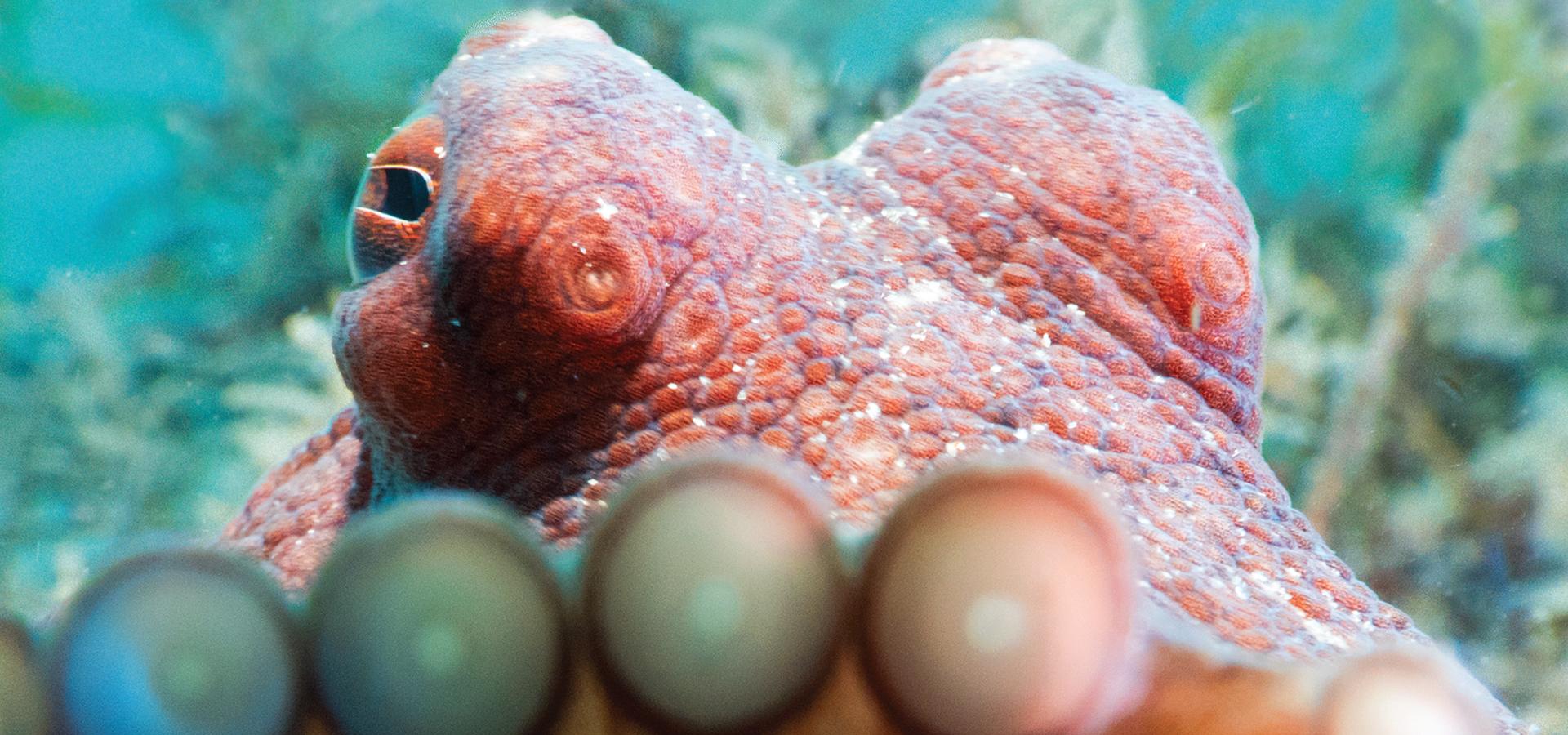ABOVE: Octopuses have eight arms (not tentacles) that extend along the entire surface. Tentacles have the suckers concentrated toward the far end, but octopuses have around 200 suckers (sometimes more) on each arm.
Arm suckers have important jobs such as tasting, feeding, attaching to a structure, or aiding in movement. All photography by Chelsea Bennice.
OctoGirl
As part of her recent Ph.D. research, Chelsea Bennice studied how two different octopus species co-exist.
She developed a 24-hour camera to monitor the animals under the Blue Heron Bridge at Phil Foster Park in Riviera Beach, Fla., an area of the Lake Worth Lagoon, that is home to the two species in these photographs.
Under the pseudonym Octo Girl, Bennice hosts social media accounts, showcasing her work through photographs and videos. She also makes marine-inspired jewelry for her Etsy shop, local dive shops and nature centers, donating proceeds to octopus research.
In addition, she hosts a compaign on FAU Springboard to help fund her next octopus research project.
Bennice earned a master’s from FAU in 2012 and stayed to complete her doctorate work. She recently accepted a position at the FAU Brain Institute’s ASCEND, an innovative program addressing the national shortage in STEM career-oriented students.
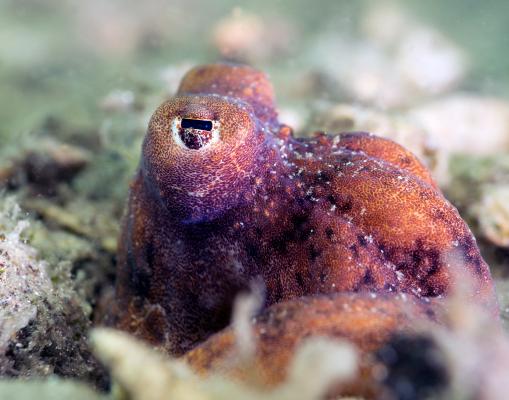
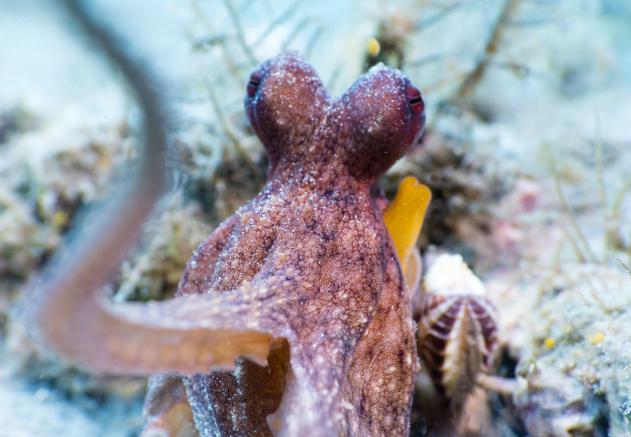
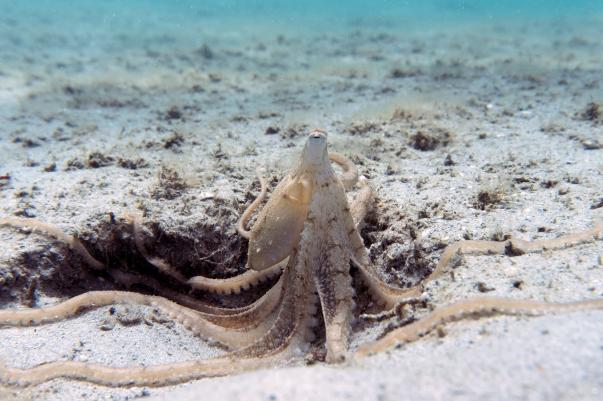
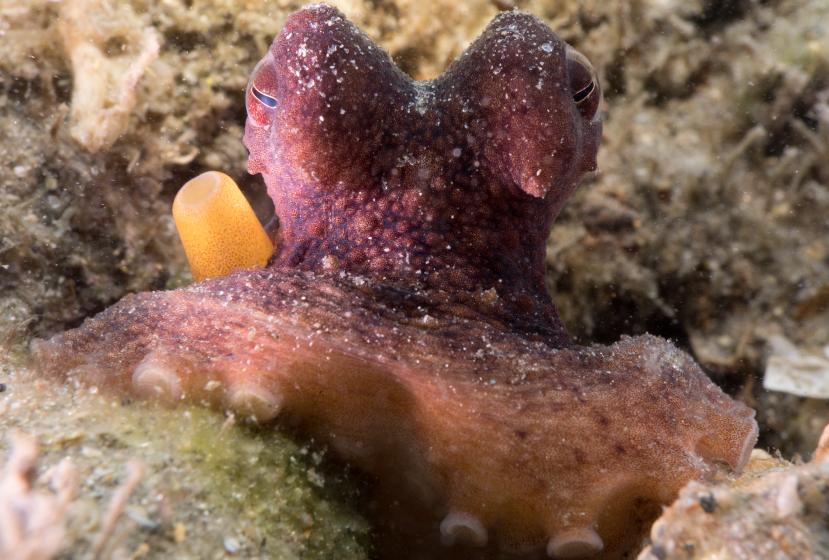
If you would like more information, please contact us at dorcommunications@mksyz.com.
• Image 1: This is a close-up shot of this octopus' colorful skin. Octopuses can change their appearance in less than one second. This rapid color change is possible by the brain's direct neural control of millions of pigmented chromatophore organs. These chromatophores are like tiny balloons filled with orange, red, yellow or brown color. If the octopus wants to be red, the brain will tell the chromatophore with red pigment to expand. Octopuses also have iridescent cells (producing all colors) in their skin.
• Image 2: The Macrotritopus defilippi (Atlantic longarm octopus) lives in sandy environments. It uses its long arms to create deep holes for its home, like a den. It also uses these long arms to reach down into sand holes to find crabs - the main menu item for this octopus.
• Image 3: Octopuses are curious creatures. This octopus vulgaris (common octopus) is checking out the camera lens. They are unique animals with a complex nervous system. The common octopus has half a billion nerve cells - dogs and cats have only slightly more. However, the central brain has only one-third of the total number of neurons. So, where are the rest? At the base of each arm is a "mini brain" that can control some arm functions without communicating to the central brain. Neurons are also found in the octopus's skin and other organs.
•Image 4: While the common octopus remains tucked away in its den during daytime hours, this species of octopus is active at night. Unlike the Atlantic longarm octopus, this species inhabits many environments (coral reefs, seagrass beds, rock/rubble areas). The orange snorkel on the side of the octopus is the octopus' funnel. This is where water, ink and waste are expelled.
